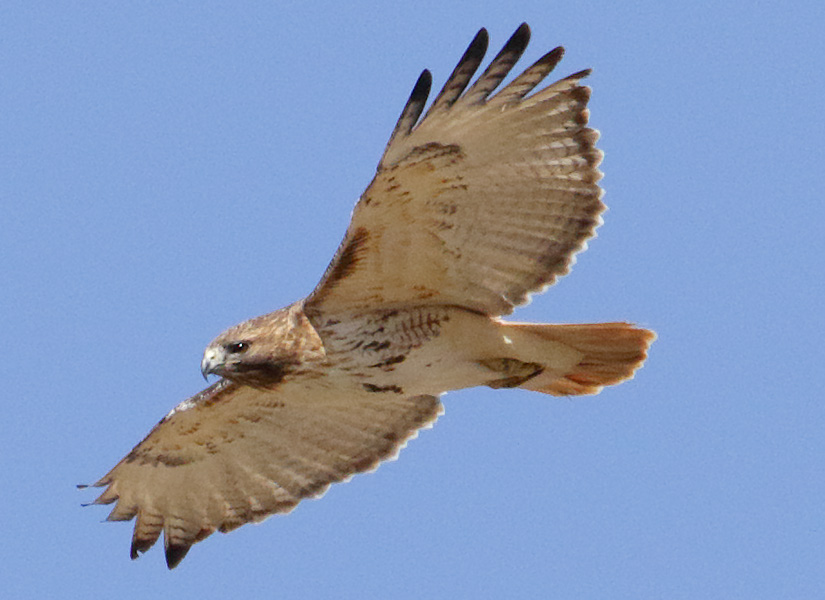
Red-tailed Hawk
Golden Eagles are a magnificent avian species to see. Although a few of them are seen in various locations every year in Virginia during migration, especially at the Rockfish Gap Hawk Watch, as far as I know, the only reliable location to see them in Virginia is during the winter months in the Blue Grass Valley in the Allegheny Mountains of Highland County, and seeing one on a single trip there is not a certainty. Walt Childs and I try to get there once or twice each winter to look for them, but because of travel, winter weather, and other committments, had not yet tried this winter. During the past 10 years, there have been only been a few sightings of Golden Eagles there after the first week of March, and given the forecast for possible snow during the next few days, today was the day to try, or wait until next winter. Under sunny skies and temperatures in the 40s, Walt met me at my house in Crozet at 9:00 a.m., and we arrived at the Blue Grass Valley at 11:00. I hoped that the sunny skies would make for good thermals, and raptors would be soaring.
On trips there in prior years, I had gotten some good photos of juvenile Golden Eagles, but only rather poor and distant photos of adults. I hoped that today would be different. On the drive to there, we saw six Red-tailed Hawks, and hoped that this was a good sign for raptors in the Blue Grass Valley. We searched the Blue Grass Valley from the West Virginia border on Wimer Mountain Road, south to Route 84, and then back north. During this search, we saw four more Red-tailed Hawks, four American Kestrels, and one Red-shouldered Hawk.

Red-tailed Hawk
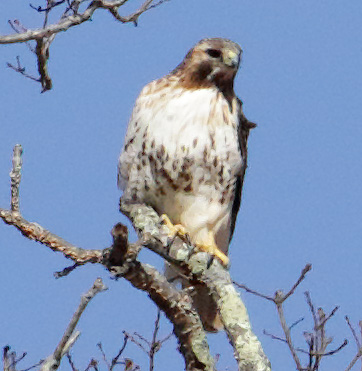
Red-tailed Hawk
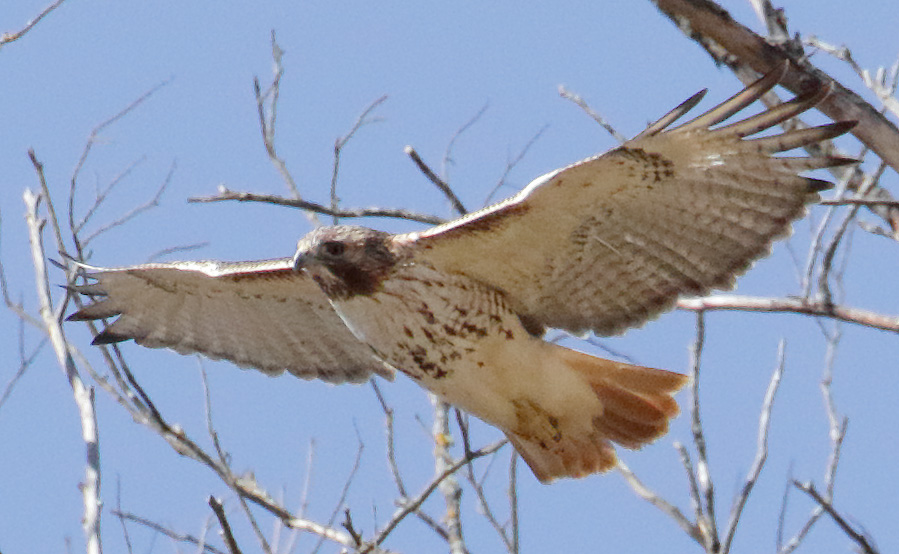
Red-tailed Hawk
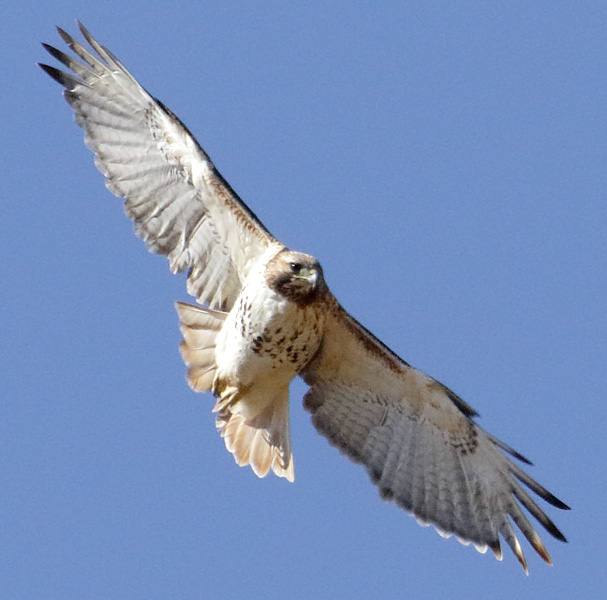
Red-tailed Hawk
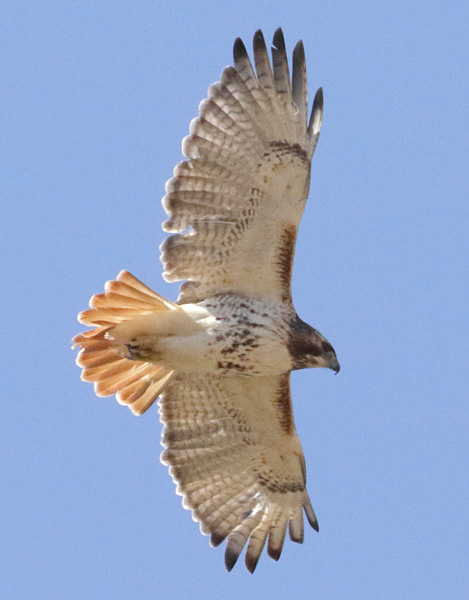
Red-tailed Hawk
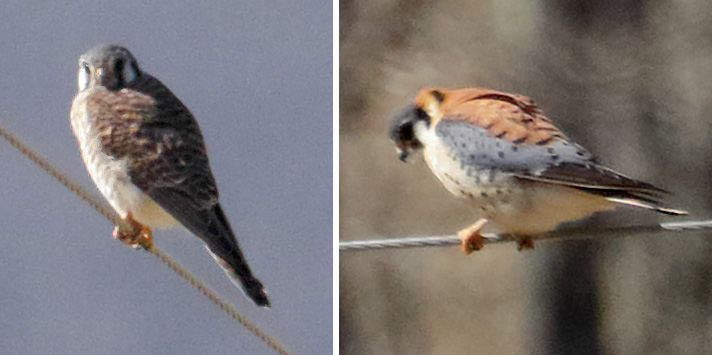
American Kestrels
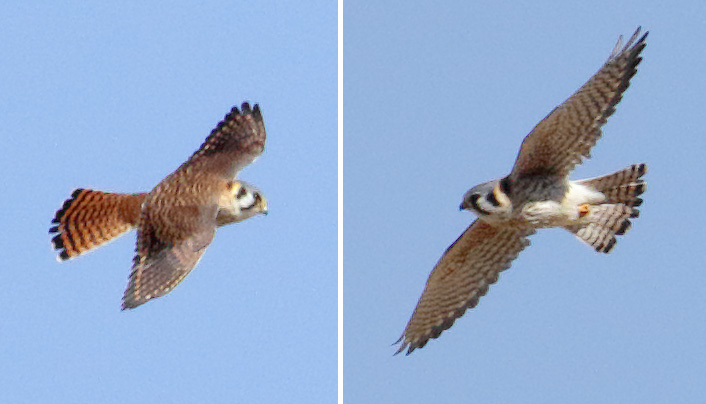
American Kestrel
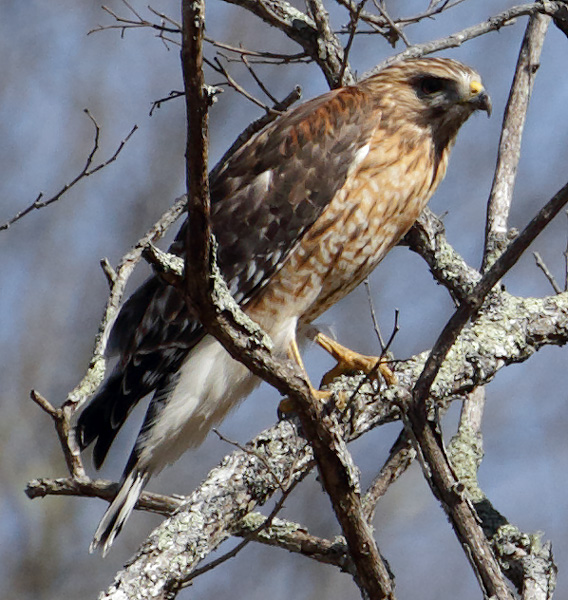
Red-shouldered Hawk
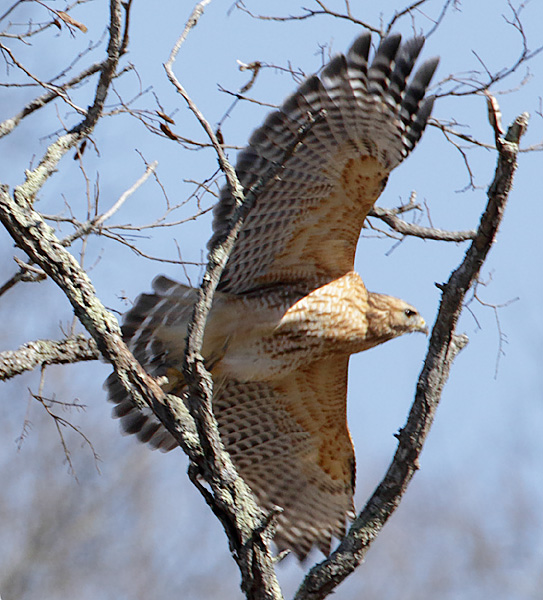
Red-shouldered Hawk
It was just past noon when we were on Hardscrabble Road, about a mile north of Hevener Road. We hadn't seen a Golden Eagle yet, although this road had been good for seeing them in previous years, and we decided to turn the car around and try somewhere else. All of a sudden, a Golden Eagle flew up from the ground near the car. It flew low behind a ridge, but we did not see it leave. We waited. A minute or so later, the Golden Eagle flew low to the ground in front of us, and then circled a few times as it gained altitude, and then flew farther to the north.
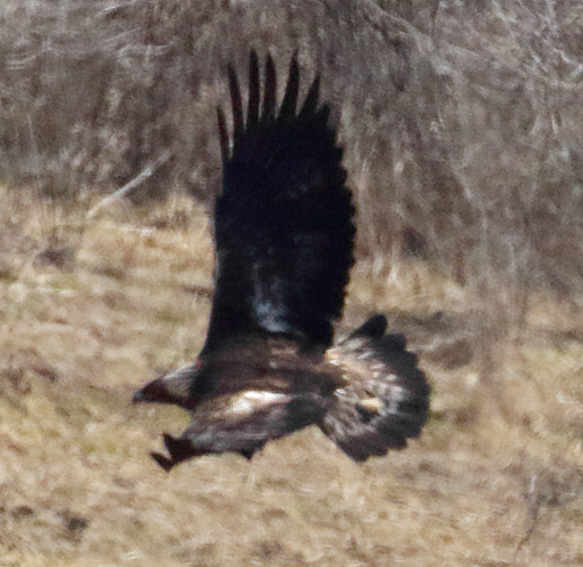
Golden Eagle
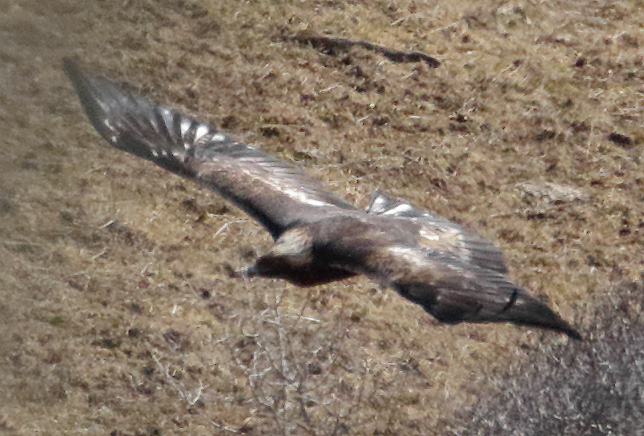
Golden Eagle
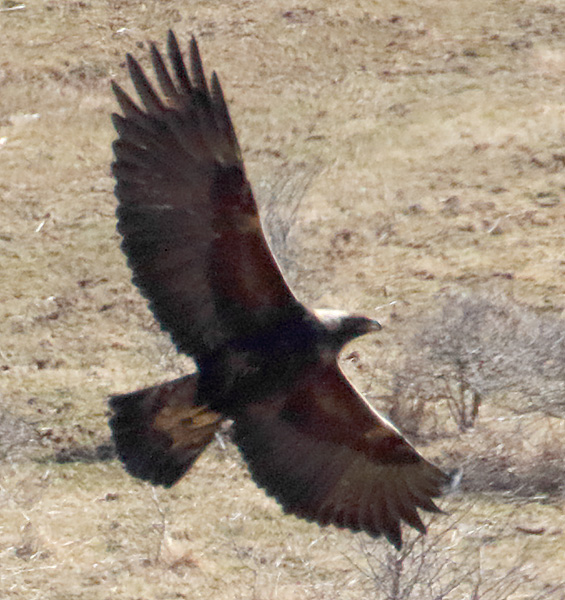
Golden Eagle

Golden Eagle
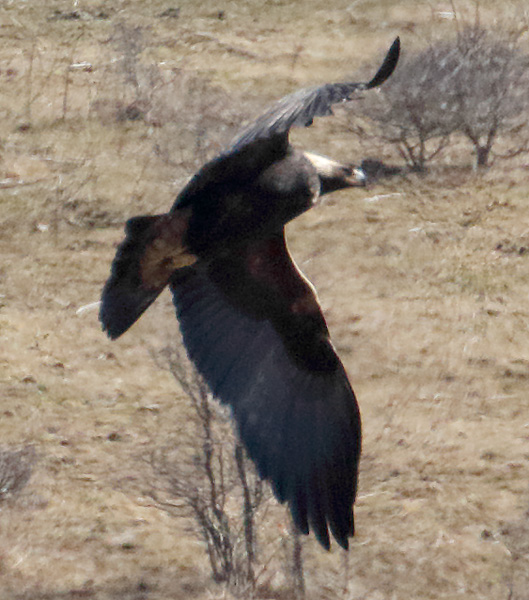
Golden Eagle

Golden Eagle
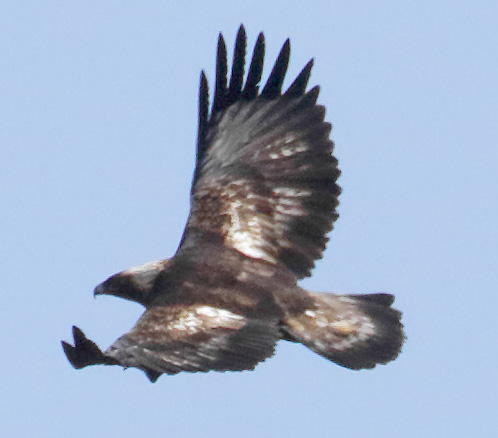
Golden Eagle
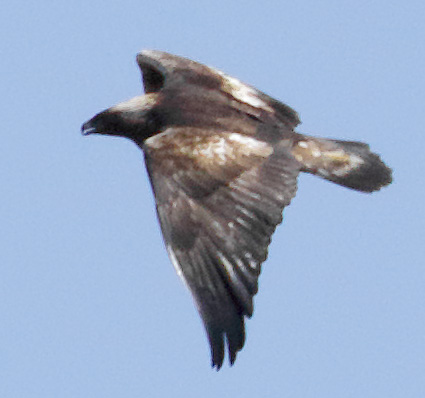
Golden Eagle
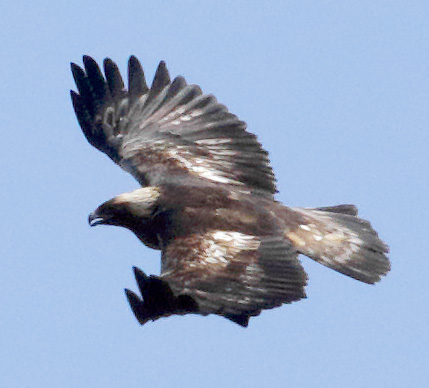
Golden Eagle
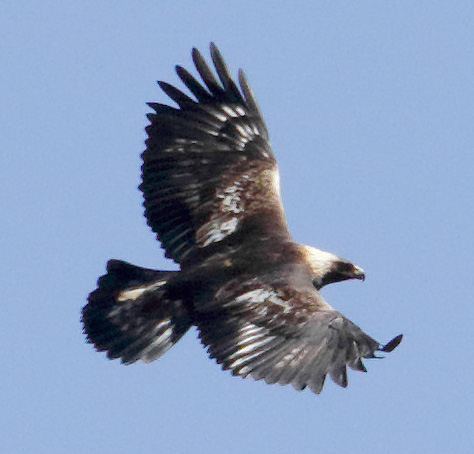
Golden Eagle
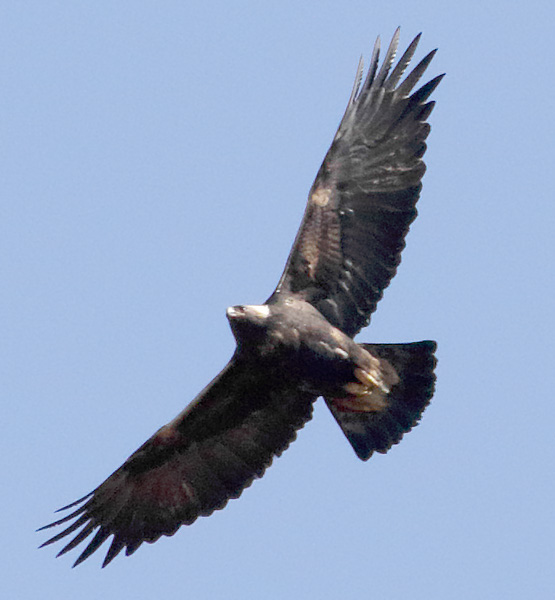
Golden Eagle
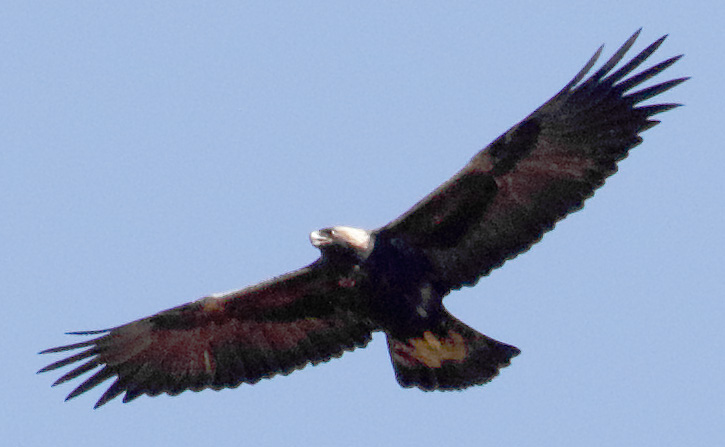
Golden Eagle
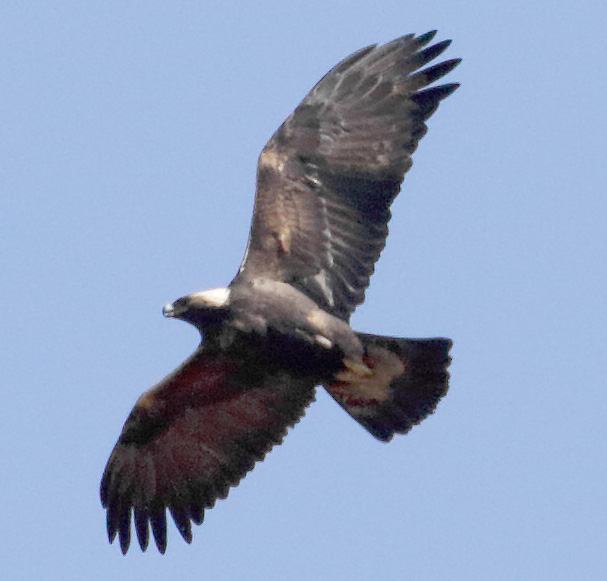
Golden Eagle

Golden Eagle

Golden Eagle
This Golden Eagle was definitely not a juvenile, but also did not have complete adult plumage. As with Bald Eagles, Golden Eagles go through various molts over a few years to reach full adulthood. I'm not as familiar with the various phases of Golden Eagles as I am with Bald Eagles, but this Golden Eagle appears to me to be a sub-adult III.
Raptors were not the only species that we saw on this trip. We ended up with 26 avian species, even though we did not stop to try to identify some of the smaller birds that we saw. We also saw several of the large, reddish-brown squirrels that reside there, as well as an unusual daytime possum.
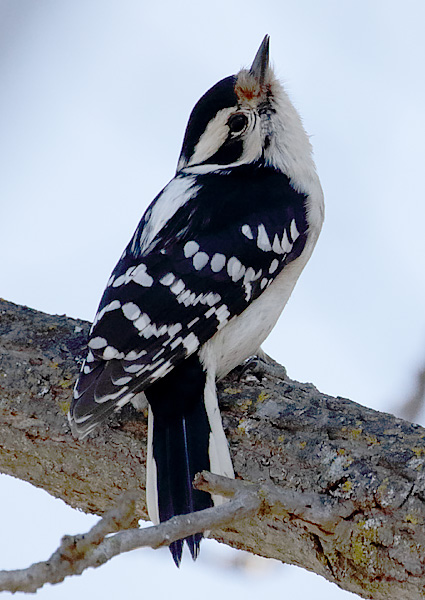
Downy Woodpecker

Possum
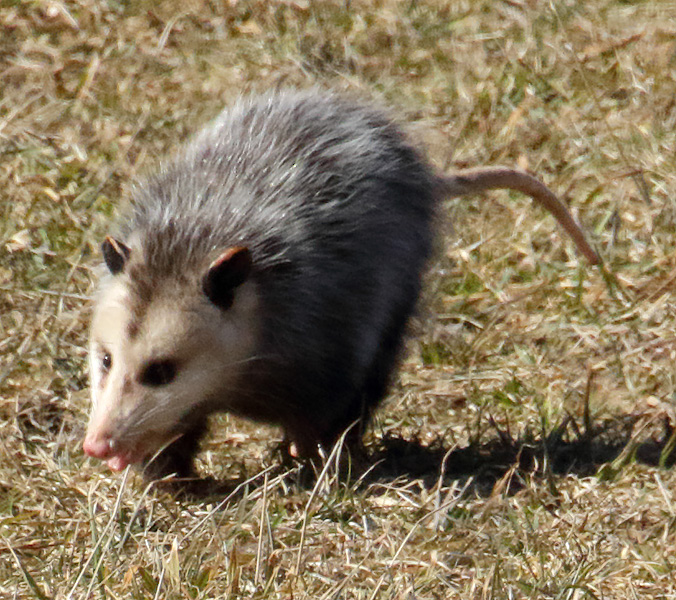
Possum
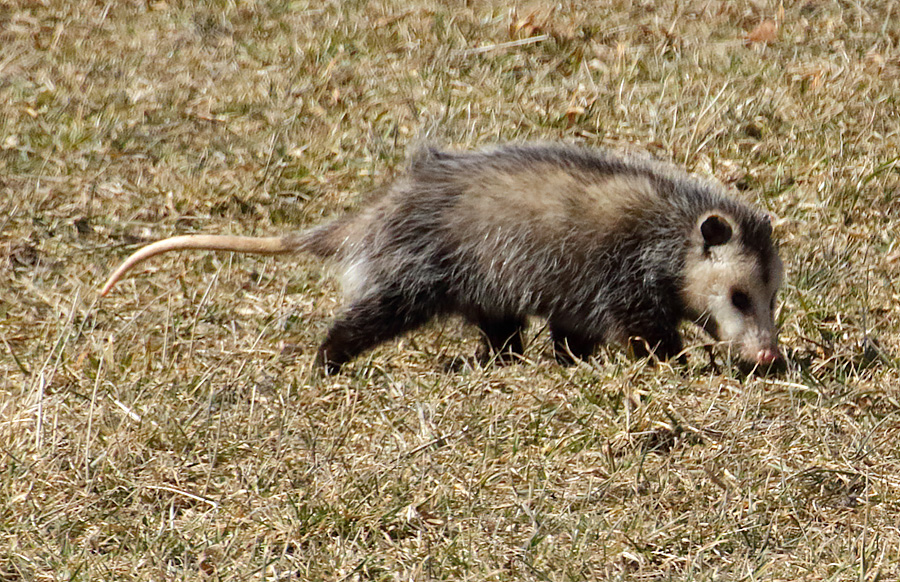
Possum
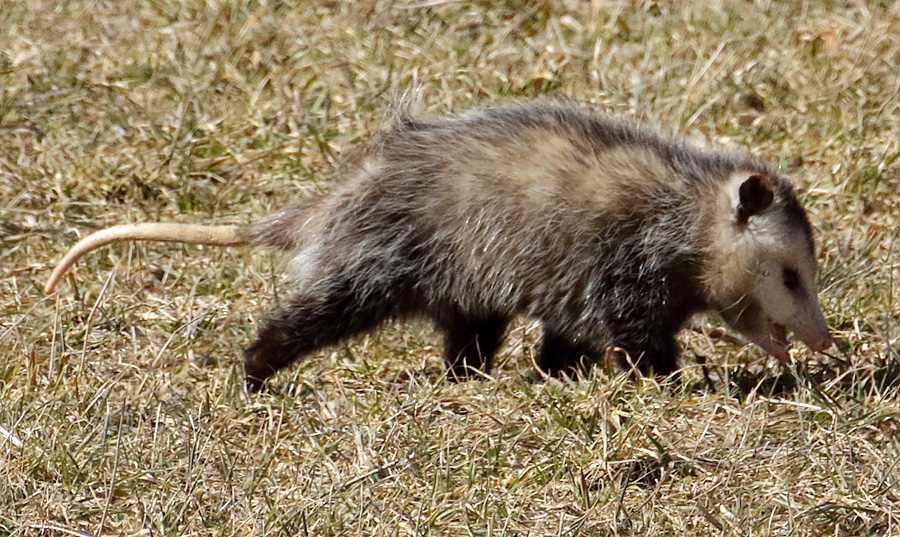
Possum